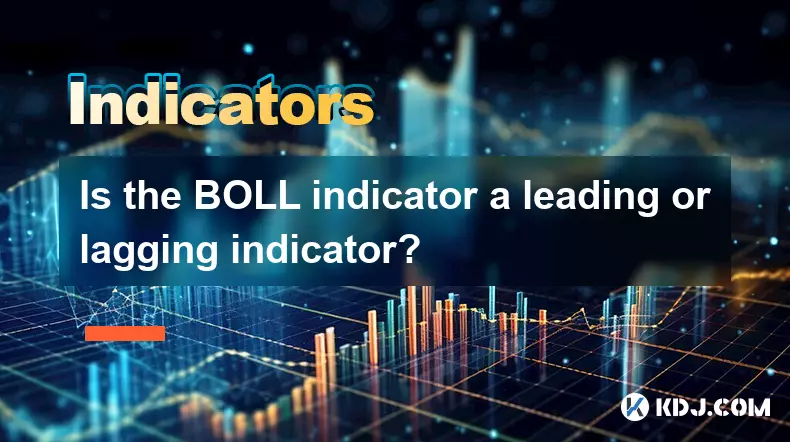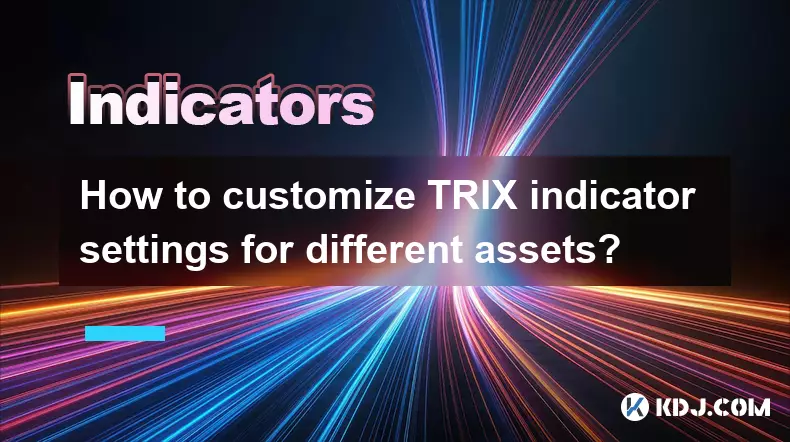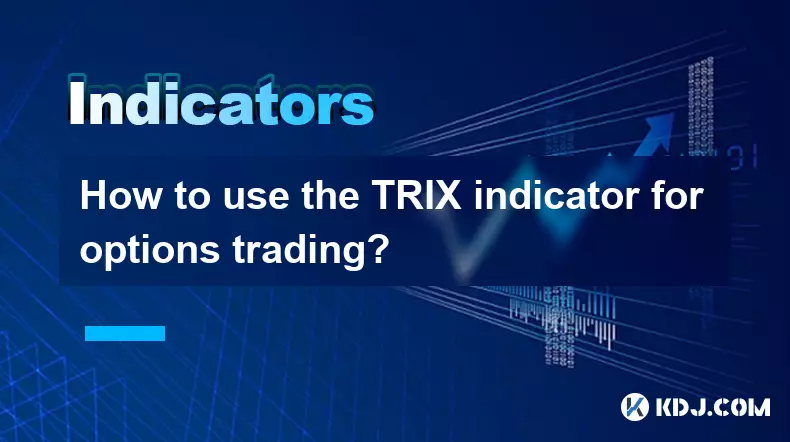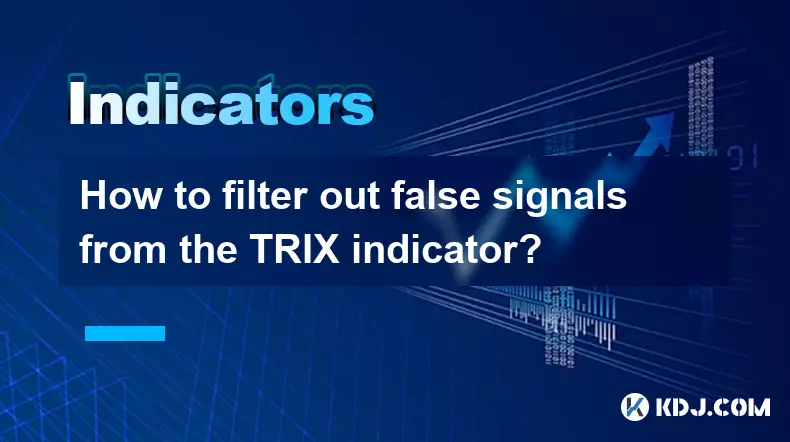-
 bitcoin
bitcoin $103094.926080 USD
3.95% -
 ethereum
ethereum $3398.208576 USD
6.43% -
 tether
tether $0.999971 USD
-0.04% -
 xrp
xrp $2.326205 USD
9.96% -
 bnb
bnb $947.145845 USD
4.46% -
 solana
solana $160.315987 USD
7.54% -
 usd-coin
usd-coin $1.000014 USD
0.01% -
 tron
tron $0.288163 USD
2.37% -
 dogecoin
dogecoin $0.164881 USD
5.50% -
 cardano
cardano $0.536519 USD
7.14% -
 hyperliquid
hyperliquid $40.526327 USD
6.62% -
 chainlink
chainlink $14.898178 USD
5.68% -
 bitcoin-cash
bitcoin-cash $483.923206 USD
4.44% -
 ethena-usde
ethena-usde $0.999280 USD
0.02% -
 stellar
stellar $0.276354 USD
6.32%
Is the BOLL indicator a leading or lagging indicator?
Bollinger Bands are a lagging indicator in crypto trading, using historical price data to gauge volatility and potential breakouts, but not predict exact reversals.
Nov 06, 2025 at 09:20 am

Understanding the BOLL Indicator in Cryptocurrency Trading
The Bollinger Bands (BOLL) indicator is widely used across financial markets, including the cryptocurrency space. It consists of three lines: a simple moving average (SMA) in the middle, with upper and lower bands that represent standard deviations from the mean price. Traders use this tool to assess volatility and potential price breakouts.
The BOLL Indicator Is Primarily a Lagging Indicator
1. The BOLL indicator relies on historical price data, particularly the 20-period SMA, which inherently makes it reactive rather than predictive.
- Since it uses past prices to calculate bands, any signal it generates occurs after a price move has already begun.
- The widening or narrowing of the bands reflects changes in volatility that have already taken place, offering confirmation rather than foresight.
- Entry or exit signals, such as price touching the upper or lower band, are based on completed price action, reinforcing its lagging nature.
- While traders may interpret tight bands as a precursor to a breakout, the actual breakout must occur before the indicator confirms increased volatility.
How Traders Use BOLL in the Crypto Market
1. In highly volatile crypto markets, BOLL helps identify overbought or oversold conditions when price approaches the outer bands.
- A price hugging the upper band may suggest strong bullish momentum, while consistent contact with the lower band can indicate bearish control.
- The 'squeeze' pattern—when bands contract tightly around the price—is closely watched for potential explosive moves in either direction.
- Combining BOLL with volume indicators can validate whether a breakout on high volatility is supported by market participation.
- Some traders pair BOLL with RSI or MACD to filter false signals, especially during sideways or low-volume periods common in altcoin trading.
Limitations of BOLL in Fast-Moving Crypto Environments
1. During sudden news-driven rallies or crashes, price can remain at one band for extended periods, rendering traditional reversal assumptions ineffective.
- In ranging markets, repeated touches of the bands might lead to whipsaw trades if not confirmed by other tools.
- The default 20-period setting may not suit shorter timeframes like 5-minute charts used in day trading major pairs such as BTC/USDT.
- Cryptocurrencies with low liquidity often exhibit erratic price spikes that distort band calculations, increasing false signals.
- Because BOLL does not account for fundamental catalysts like protocol upgrades or exchange listings, it cannot anticipate sentiment shifts driven by real-world events.
Frequently Asked Questions
Can BOLL predict exact reversal points in Bitcoin’s price?No, BOLL does not predict precise reversals. It highlights areas where price may face resistance or support based on historical volatility, but confirmations from candlestick patterns or order book depth are needed.
Is the BOLL indicator effective for altcoins?It can be useful but requires adjustment. Altcoins often experience sharper moves and longer trends, so using modified settings or combining BOLL with on-chain metrics improves reliability.
What does a BOLL squeeze indicate in a crypto chart?A squeeze suggests extremely low volatility and often precedes a significant price movement. However, the direction of the breakout isn’t indicated by BOLL alone—traders watch for volume surges to determine momentum.
Why does price sometimes keep rising even after touching the upper BOLL band?In strong trending markets, especially during bull runs, price can ride along the upper band as momentum persists. This reflects sustained buying pressure rather than an imminent reversal.
Disclaimer:info@kdj.com
The information provided is not trading advice. kdj.com does not assume any responsibility for any investments made based on the information provided in this article. Cryptocurrencies are highly volatile and it is highly recommended that you invest with caution after thorough research!
If you believe that the content used on this website infringes your copyright, please contact us immediately (info@kdj.com) and we will delete it promptly.
- LBank Lists MOTHER VEGETABLE (MVT) Token: A Green Crypto Gem?
- 2025-11-06 18:55:01
- Marathon Digital's AI-Pivot: From Bitcoin Miner to Digital Infrastructure Leader?
- 2025-11-06 18:35:01
- Ripple, XRP, and Private Giants: A $40 Billion Power Play
- 2025-11-06 18:55:01
- Finport Coin: The Community-Driven Crypto Token Redefining Digital Assets
- 2025-11-06 19:00:01
- XRP Price, Ripple Funding, and Mastercard: Decoding the Crypto Buzz
- 2025-11-06 18:00:02
- Aster Price Prediction: Can Whale Moves Hint at a New ATH?
- 2025-11-06 17:00:01
Related knowledge

How do professional traders use the TRIX indicator?
Nov 06,2025 at 04:40pm
Understanding the TRIX Indicator in Crypto TradingThe TRIX (Triple Exponential Average) indicator is a momentum oscillator used by professional trader...

Can the TRIX indicator be used for long-term investing?
Nov 06,2025 at 02:19pm
Understanding the TRIX Indicator in Cryptocurrency Markets1. The TRIX (Triple Exponential Average) indicator is a momentum oscillator designed to filt...

How to customize TRIX indicator settings for different assets?
Nov 06,2025 at 03:39pm
Understanding the TRIX Indicator in Cryptocurrency Trading1. The TRIX (Triple Exponential Average) indicator is a momentum oscillator designed to filt...

How to use the TRIX indicator for options trading?
Nov 06,2025 at 04:19pm
Understanding the TRIX Indicator in Crypto Options Trading1. The TRIX indicator, or Triple Exponential Average, measures the rate of change of a tripl...

What timeframes work best with the TRIX indicator?
Nov 06,2025 at 05:20pm
Understanding the TRIX Indicator in Crypto TradingThe TRIX (Triple Exponential Average) indicator is a momentum oscillator designed to filter out shor...

How to filter out false signals from the TRIX indicator?
Nov 06,2025 at 12:49pm
Understanding the TRIX Indicator in Crypto Markets1. The TRIX (Triple Exponential Average) indicator is a momentum oscillator used to identify oversol...

How do professional traders use the TRIX indicator?
Nov 06,2025 at 04:40pm
Understanding the TRIX Indicator in Crypto TradingThe TRIX (Triple Exponential Average) indicator is a momentum oscillator used by professional trader...

Can the TRIX indicator be used for long-term investing?
Nov 06,2025 at 02:19pm
Understanding the TRIX Indicator in Cryptocurrency Markets1. The TRIX (Triple Exponential Average) indicator is a momentum oscillator designed to filt...

How to customize TRIX indicator settings for different assets?
Nov 06,2025 at 03:39pm
Understanding the TRIX Indicator in Cryptocurrency Trading1. The TRIX (Triple Exponential Average) indicator is a momentum oscillator designed to filt...

How to use the TRIX indicator for options trading?
Nov 06,2025 at 04:19pm
Understanding the TRIX Indicator in Crypto Options Trading1. The TRIX indicator, or Triple Exponential Average, measures the rate of change of a tripl...

What timeframes work best with the TRIX indicator?
Nov 06,2025 at 05:20pm
Understanding the TRIX Indicator in Crypto TradingThe TRIX (Triple Exponential Average) indicator is a momentum oscillator designed to filter out shor...

How to filter out false signals from the TRIX indicator?
Nov 06,2025 at 12:49pm
Understanding the TRIX Indicator in Crypto Markets1. The TRIX (Triple Exponential Average) indicator is a momentum oscillator used to identify oversol...
See all articles























![[4K 60fps] Morcee by DTMaster09 (1 Coin) [4K 60fps] Morcee by DTMaster09 (1 Coin)](/uploads/2025/11/06/cryptocurrencies-news/videos/690bf31847bc1_image_500_375.webp)


















































